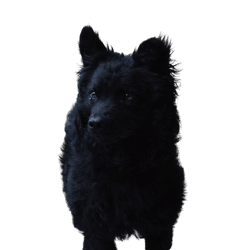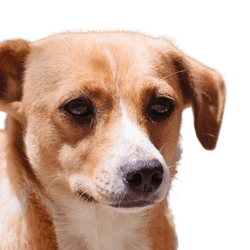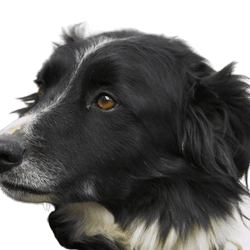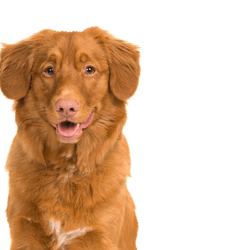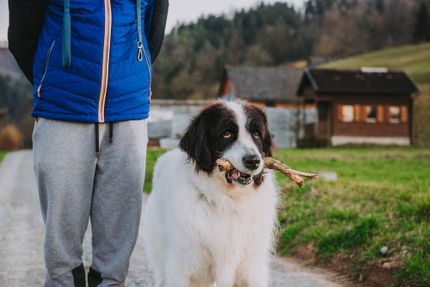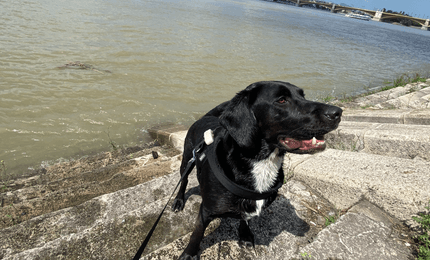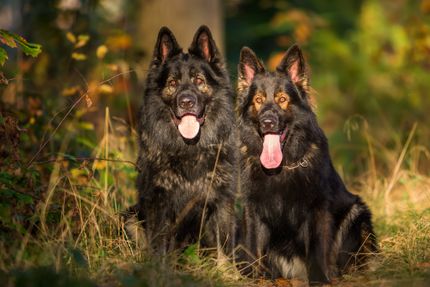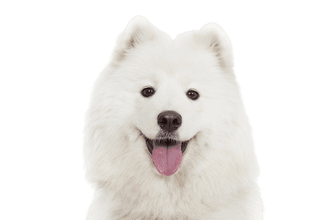
Samoyed Breed description: Character & Co
Samoyed
Facts & Origin
Its nordic "smile" and their beautiful, bright coat make the Samoyed a much loved dog breed. But for lifelong well-being they need a lot of stimulation, time with its owners and new mental challenges constantly. Its overall robust health with only a few breed-related predispositions for diseases must be emphasised.
Origin of the Samoyed
The original home of the Samoyed is Siberia. There it was mainly used as a hunting and guard dog. Its muscular build and persevering nature also made him a popular sledge dog. The first of its kind reached Western Europe only at the end of the 19th century. According to the tradition, a Samoyed puppy named Sabarka was the first of its kind to reach England. More and more researchers followed the example of the zoologist Ernest Kilburn-Scott. Apparently, after 1909 there were so many Samoyeds over there that breed standards were established and official breeding began.
Breed characteristics of Samoyed
- FCI Standard: 212; Group Five (Pointed, Original Type Dogs); Section 1 (Nordic Sled Dogs)
- Appearance: Arctic Spitz with "smiling" eye shape and slightly upward pointing corners of the lips; pointed muzzle and stand-up ears
- Breeding forms: Coat colour always pure white or pure cream
- Other physical characteristics: Medium-sized, strong build under lush, dense, white coat with thick undercoat; high set, slightly curled tail, which is carried either over the back or bent to the side
Samoyeds - past and present use
From the very beginning, the breeding of Samoyed has been based on the goal of producing a good-natured and efficient working dog. As a sledge dog it still competes in dog sports today. It is well suited for the use as a herd protection dog. Once upon a time it was also used as a reliable guard dog in its region of origin in Siberia. But the conditions in modern households have changed its friendly and open-minded nature after long-term breeding. Therefore, is is hardly used as a guard dog nowadays.
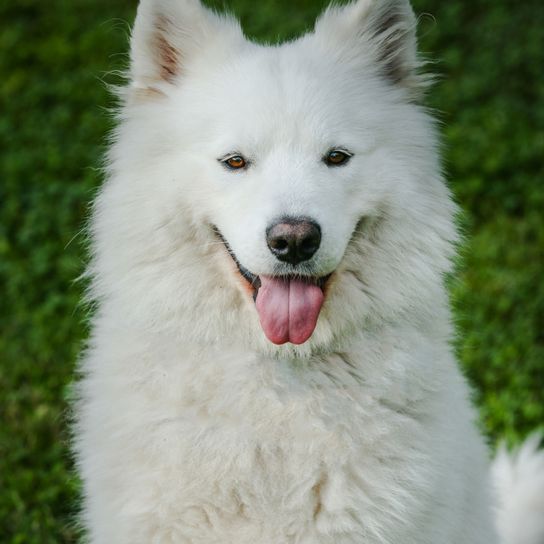



| Alternate Name | Samojede Spitz |
| Origin | Russia |
| Life expectancy | 12 - 13 years |
| Care requirements | high-maintenance |
| Activity level | average |
| FCI group | Nordic Sledge Dogs |
| AKC group | working group |
| KC group | Pastoral Group |
Samoyed mixes
Attitude, character and temperament of the breed
Characteristics of the Samoyed
The nature of a Samoyed is sociable and friendly. Its open-minded nature also implies a great willingness to learn. But already at puppy age the Samoyed needs to be trained consistently. Otherwise its independent character might lead to problems with subordination. If you want to buy a Samoyed, you should always take the lead yourself, and you should do so from early puppy age onwards. Even with a good upbringing, a Samoyed needs a lot of exercise and stimulation. For its breed was once bred to pull sledges and protect herds. The temperament of the breed will give you a lot of pleasure - but only if your dog is always kept occupied. Otherwise it will quickly find other things to do.
Keeping and character traits of the Samoyed
Keeping a Samoyed in an apartment is only sensible if you have big, open-planned rooms. For its well-being, putting them in a kennel is also unsuitable. A living situation with a garden is ideal. Furthermore, they are only happy if they can use up all of their energy every day. You can go for great walks with them, harness them to a sledge, take them on a run or challenge them with intelligence games. If they have to stay alone for a longer period of time, it is best to practice this as early as possible. Because the Samoyed really would like to spend every second among the circle of its human pack. Additionally, your dog's habituation to children should be carefully trained with them. Actually the sporty northern dog is fond of children. But in his resting times it is better if children learn to leave them alone when they are in their resting area. The breed is not suitable for first-time owners. You should also have a strong leadership character yourself and know what consistency means. If these conditions are met, your dog's ability to pick up things quickly and its joy of learning will enchant you a whole dog's life long.
Character
Usage



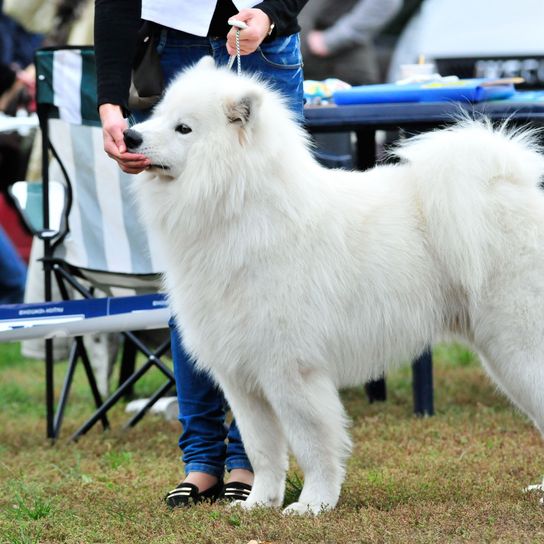

Health and breeding information
Breed typical diseases of the Samoyed
Due to their very dense, lush coat, skin problems may occur in individual cases during coat change. But you can reliably avoid this by grooming the litter daily or several times a week with an appropriate coat brush. Occasionally, hip dysplasia can occur due to genetic reasons. It is best to have your puppy checked for a genetic predisposition for eye diseases. Serious breeders will give you information on this if you want to buy a Samoyed. Not usually typical for this breed, but due to inappropriate nutrition, cases of diabetes are possible. You can avoid this, however, by providing them with sufficient exercise and a balanced diet from puppies to old age.
Important requirements for breeding Samoyed
The Samoyed breeding requires care in the selection of the parents. Physically you prepare yourself well for a litter of healthy puppies by thorough examination and selection by serious breeders. Please also pay attention to the following criteria:
- A Samoyed puppy can be beautiful. But much more important is having them examined for a good health condition. Also the character plays a lifelong important role. You can recognise the presumed nature of the litter by looking carefully at the behaviour of the parents.
- When mating, please take care not to mate any Samoyeds that are related to each other. Only foreign mating guarantees the desired and existing robustness in the health of the animals.
- Breeding Samoyed also requires the right character traits of the breeder. You should have consistency, self-control and assertiveness. Because even the most gentle Samoyed will test these traits on you in their puppy stage.
A Samoyed puppy costs about 1100 Euros.


Fur and appearance of Samoyeds
The appearance of Samoyeds strongly reminds of smaller Spitz breeds. Often the dog with its dense, light coat is also confused with the Siberian Husky. But the dark eyes and much longer coat reveal the mistake at first sight. Especially important for a content life is the coat care of your Samoyed. Only by daily combing and brushing it will it remain as fluffy and silky soft as when it was puppy. Additionally, their dense coat with its thick undercoat causes them to shed a lot of hair constantly. This can be somewhat contained by the daily care.
Samoyed - size, weight and age expectation
- size bitches: 50 to 56 centimetres
- size males: 54 to 60 centimetres
- weight bitches: 17 to 25 kilograms
- weight males: 20 to 30 kilograms
- average age: 12 to 14 years
| Fur length | long |
| Fur | flat coated |
| Ear shape | Standing Ears |
| Tail | fanned out |
| Anatomy | rugged |
| Size ♀ | 48 - 54 cm |
| Weight ♀ | 16 - 30 kg |
| Size ♂ | 53 - 60 cm |
| Weight ♂ | 20 - 30 kg |
| Suitable For | - |
Colors






Known Diseases
Diabetes
The metabolic disease diabetes often occurs in overweight dogs.
Hip dysplasia (HD)
The hip dysplasia or hip joint dysplasia of the dog (HD) is a maldevelopment of the hip joint.
FAQ
-
Samoyed can be on the one hand simply the name of the dog of the Saamod people (Russian people, Samoyed), on the other hand there could be a second meaning. The Nordic dog could also have its name from the proper name of the Finns (Suomi).
-
Yes, the dog is perfect to be a member of the family.
-
A Samoyed needs average to much exercise. You should plan at least 3 hours a day.
-
Yes, a Samoyed sheds hair and also needs to be sheared and brushed regularly.
-
A Samoyed puppy costs about 1600 Euro.
Other medium dogs
Useful Articles
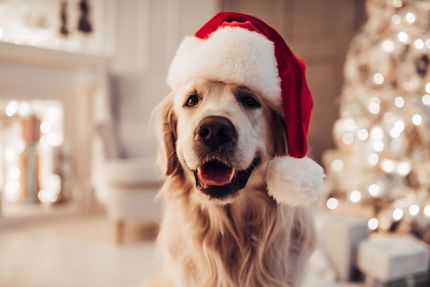
You can find articles that might interest you in the dogbible blog to match your favorite breed.
Visit our magazineto stay up to date on dog trends.
To find out more, view our Privacy Policy
Find here the breed that suits you and find out what character traits it has. Here you can also learn more about the origin, size and weight of your favorite breeds.
Matching your favorite breed, you'll find articles that might interest you on the dogbible dog blog.
Baking dog biscuits - recipe and ideas for homemade treats
Dog ran away - what to do if the dog is gone?
Ataxia in dogs - causes, symptoms, diagnosis and treatment


